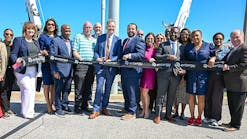He must have finally gotten tired of my repeated responses that had the word ‘think’ in them. He finally stopped me and said “Otto, engineers don’t just think, they know! Now come back to me when you know the answers.” This is a statement that I live by to this day.
However, is it really possible to ‘know’ everything? I’ve been in this industry for 33 years and I still do not ‘know’ everything. And I never will. That is why I enjoy my career so much as I am learning new things every day.
But just because I might learn something new when I read an article in T&D World, hear an outstanding presentation and read an excellent paper at the upcoming ASCE/SEI ETS Conference (more on this later), listen to new ideas and concepts shared by the experts at ASCE Standards and Manuals of Practices committee meetings, or hear a presentation at any number of other venues, does that mean that I suddenly ‘know’ this new topic?
To help me understand this better, I looked up the definition of ‘know’ on that expert of all things known, the Internet. The top three definitions are: 1) “To perceive directly; grasp in the mind with clarity or certainty.” 2) “To regard as true beyond doubt.” 3) “To have a practical understanding of, as through experience; be skilled in.”
My wife gets quite upset with me whenever she asks me a question and I reply “I don’t know. I’m sorry, but I do not know why Becky’s car isn’t starting; she lives three states away from us!” Next time I get one of those impossible questions to answer, I’m going to pull out an index card I now have in my back pocket with these definitions and show it to her.
On the other side of this, is it actually possible to ‘know’ everything about an engineering design that we obtained degrees in and have extensive experience in? Do we actually know exactly what the maximum wind speed and/or the maximum ice load on an overhead line will be? Do we actually know exactly what the yield strength of the steel on a tubular pole or a lattice tower is? Do we actually know exactly the strength of every single one of those wood poles? Do we actually know exactly how much a wire will sag under an increased temperature?
Of course, we don’t exactly know any of this. However, can we perceive or grasp in our minds with clarity what we think they will be? Can we regard as true beyond doubt these values based on years of research and validations? Can we gain a practical understanding of what these principals are through experience and skill? Absolutely!
ASCE has an entire series of Manuals of Practices and Standards that are specifically written for the overhead grid infrastructure, and many of them are being updated as I write this column. What better way to know that your methods and calculations are correct than to follow centuries of combined industry expertise that are continuously being revised and updated? If you are not familiar with them already, I would encourage you to discover them and use them!
One of the best ways to become aware of them and their knowledge is to attend the upcoming ASCE/SEI Electrical Transmission & Substation Structures (ETS) Conference in Orlando next Oct. 2-6, 2022; https://www.etsconference.org/. See Mr. Cashman’s closing column on the back of this supplement for more information on the ETS Conference. The full technical papers of all of the articles in this supplement will be presented at the ETS Conference.
As I conclude my thoughts on this topic, I do have a great concern about the state of our industry today. There are a lot of companies outside of our industry that see the opportunities and are offering solutions when they don’t know a thing about the subject matter. As a lineman friend once told me, ‘They don’t even know which end of the pole goes up!’
There are a many that are practicing engineering well outside of their areas of expertise. In fact, many times an engineer is not even involved in these efforts. How do they ‘know’ what they are doing when they do not even understand that wires move up and down with temperature and ice, and blow out with wind?
How can a proper vegetation analysis even be done when the wire movement envelope is not known, or worse, not known about to begin with? How can a proper storm hardening effort be undertaken if the fundamentals of structural engineering aren’t known? If you are involved with any such project and do not have an engineer who knows these behaviors of wires and structures, I would highly encourage you to get an engineer involved who does know.


